All issues

Volume 36 (1993)
- Issue 6 Pages 737-
- Issue 5 Pages 283-
- Issue 4 Pages 225-
- Issue 3 Pages 155-
- Issue 2 Pages 63-
- Issue 1 Pages 1-
Predecessor
Volume 36, Issue 2
Displaying 1-16 of 16 articles from this issue
- |<
- <
- 1
- >
- >|
-
[in Japanese]1993Volume 36Issue 2 Pages 63
Published: April 30, 1993
Released on J-STAGE: April 30, 2010
JOURNAL FREE ACCESSDownload PDF (53K) -
[in Japanese]1993Volume 36Issue 2 Pages 64-69
Published: April 30, 1993
Released on J-STAGE: April 30, 2010
JOURNAL FREE ACCESSDownload PDF (960K) -
[in Japanese]1993Volume 36Issue 2 Pages 70-73
Published: April 30, 1993
Released on J-STAGE: April 30, 2010
JOURNAL FREE ACCESSDownload PDF (386K) -
[in Japanese]1993Volume 36Issue 2 Pages 74-80
Published: April 30, 1993
Released on J-STAGE: April 30, 2010
JOURNAL FREE ACCESSDownload PDF (622K) -
[in Japanese], [in Japanese]1993Volume 36Issue 2 Pages 81-85
Published: April 30, 1993
Released on J-STAGE: April 30, 2010
JOURNAL FREE ACCESSDownload PDF (1643K) -
[in Japanese]1993Volume 36Issue 2 Pages 86-91
Published: April 30, 1993
Released on J-STAGE: April 30, 2010
JOURNAL FREE ACCESSDownload PDF (562K) -
[in Japanese]1993Volume 36Issue 2 Pages 92-94
Published: April 30, 1993
Released on J-STAGE: April 30, 2010
JOURNAL FREE ACCESSDownload PDF (1012K) -
[in Japanese]1993Volume 36Issue 2 Pages 95-98
Published: April 30, 1993
Released on J-STAGE: April 30, 2010
JOURNAL FREE ACCESSDownload PDF (1602K) -
[in Japanese]1993Volume 36Issue 2 Pages 99-101
Published: April 30, 1993
Released on J-STAGE: April 30, 2010
JOURNAL FREE ACCESSDownload PDF (361K) -
[in Japanese]1993Volume 36Issue 2 Pages 102-108
Published: April 30, 1993
Released on J-STAGE: April 30, 2010
JOURNAL FREE ACCESSDownload PDF (819K) -
[in Japanese]1993Volume 36Issue 2 Pages 109-115
Published: April 30, 1993
Released on J-STAGE: April 30, 2010
JOURNAL FREE ACCESSDownload PDF (597K) -
[in Japanese]1993Volume 36Issue 2 Pages 116-119
Published: April 30, 1993
Released on J-STAGE: April 30, 2010
JOURNAL FREE ACCESSDownload PDF (542K) -
[in Japanese]1993Volume 36Issue 2 Pages 120-125
Published: April 30, 1993
Released on J-STAGE: April 30, 2010
JOURNAL FREE ACCESSDownload PDF (428K) -
T. Wada, S. Kimura, N. Nishikawa, M. Takeyama, Y. Ase, A. Hara, J. Kus ...1993Volume 36Issue 2 Pages 126-131
Published: April 30, 1993
Released on J-STAGE: April 30, 2010
JOURNAL FREE ACCESSThe purpose of the present study is to investigate whether the sympathetic nervous system (SNS) exerts in protective or enhancing manner when the ear is exposed to intense sound (2kHz, 10min). Fifty-three albino guinea pigs were divided into three groups, ie SNS stimulating group, SNS eliminated group and untreated controls. Each animal group was further divided into three subgroups by the sound pressure level (110, 115 and 130dB SPL) of the exposed intense sound. The superior cervical ganglion was electrically stimulated during acoustic overstimulation in SNS stimulating group, and sympathectomy was performed before acoustic overstimulation in SNS eliminated group. The measurement of the threshold shift in compound action potential after acoustic overstimulation revealed no significant difference among three groups regardless of the intensity of overstimulation. These results, however, does not exclude the possibility of SNS contribution to the susceptibility to acoustic trauma. Further studies including systemic condition of SNS are necessary to elucidate the presence or absence of this possibility.View full abstractDownload PDF (689K) -
3: Analysis on the Reproducibility of Test ResultsToshiaki O-Uchi, Akira Ogata, Hiroyasu Mashino, Shigemitsu Yoshihara, ...1993Volume 36Issue 2 Pages 132-139
Published: April 30, 1993
Released on J-STAGE: April 30, 2010
JOURNAL FREE ACCESSThe reproducibility of test results at two consecutive screening hearing tests in annual physical examination (1990, 1991) in a company (so-called third-industry) was analysed. The subjects were 1229 persons which consisted of 1076 males and 153 females. No-responders were defined as those who showed no response to 30dB at 1kHz or 40dB at 4kHz tones.
The results obtained were as follows;
1) No-responder was found in 4.9% in two consecutive tests.
2) The reproducibility of test results was found in 1178 persons out of 1229 (95.0%) and in 2398 ears out of 2458 (97.6%).
3) There was no remarkable difference of the reproducibility between males and females.
4) The reproducibility tended to decrease as the age increased in the subjects of more than forties.
5) The reproducibility was 99.1% at 1kHz and 98.0% at 4kHz.
6) The reproducibility at the second test was 98.3% in the ears with positive response at the first test, but it was only 66.7% in the ears with no response at the first test.
7) The reproducibility at the second test was 99.5% at 1kHz and 98.5% at 4kHz with positive repsonse at the first test, but it was only 59.3% at 1kHz and 68.3% at 4kHz with no response at the first test.
8) It was concluded that the reproducibility of test results at two consecutive screening hearing tests in annual physical examination was relatively excellent in general although it could be influenced by the no-responder rate.View full abstractDownload PDF (1116K) -
Takuya Yamakawa, Hiroshi Yoshikawa, Gini-chirou Ichikawa1993Volume 36Issue 2 Pages 140-146
Published: April 30, 1993
Released on J-STAGE: April 30, 2010
JOURNAL FREE ACCESSWave IV and V of ABR are not always easily identifided, because of the compound formation of IV-V complex. To investigate modality of this IV-V complex of ABR, effect of masking noise on ABR (IV-V complex) was reported.
The results were as follows.
1) Masking noise level was insufficient to use for masking in ABR studies, in consideration with BI (Binaural Interaction).
2) The amplitude of wave IV, V and the peak of slow component decreased as the level of masking noise increased.
3) The ipsilateral recording of ABR was required to use masking of contralateral ear to eliminate shadow response. But there was some possibilities of the effect in the central lesion of auditory tract with masking noise.View full abstractDownload PDF (732K)
- |<
- <
- 1
- >
- >|